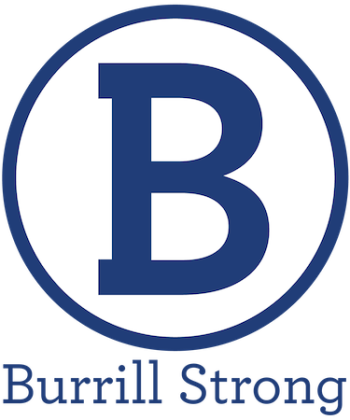Wednesday featured the second night of the demolition derby. I’ve been going to the derby at the fair for as long as I can remember, and I’ve always watched it from the stands, just like everybody else; however, this year I decided to try a different perspective: the pit area. It’s not open to the public, but as a member of the local media, I was able to gain access to the behind-the-scenes chaos.
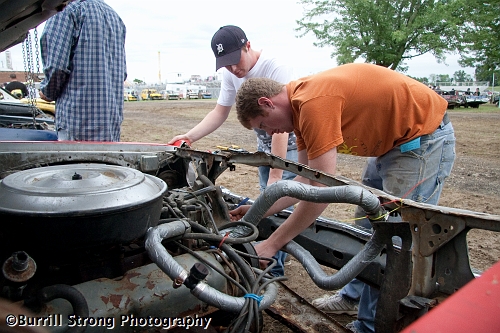
These brave souls decided to try running the derby without a radiator.
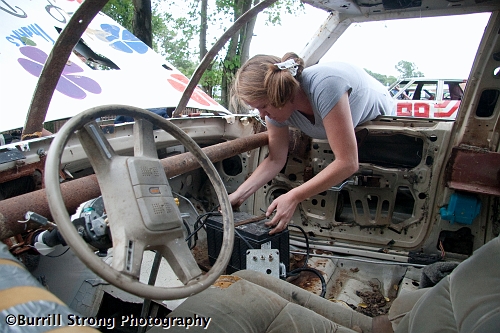
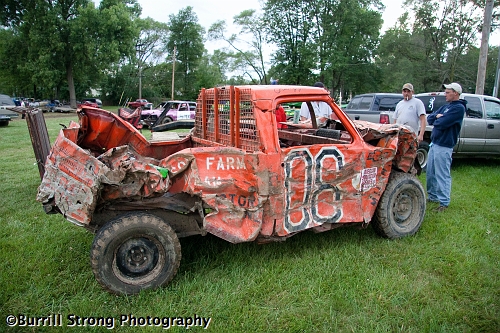
This is how Chris Hurst’s truck looked before running in the Chelsea derby. That’s because the Chelsea derby would be its seventh. He told me it’s a Dodge truck with a Chevy powertrain; I’m glad he knows what it is, because there’s no longer any way to tell its make just by looking at it.
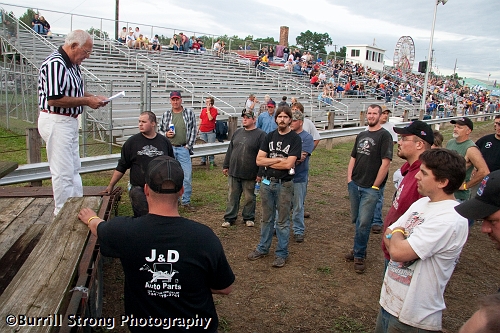
Long-time fans of the Chelsea derby have been hearing the same announcer, Chuck, for countless years. Here, Chuck is going over the rules in the pre-race drivers meeting.
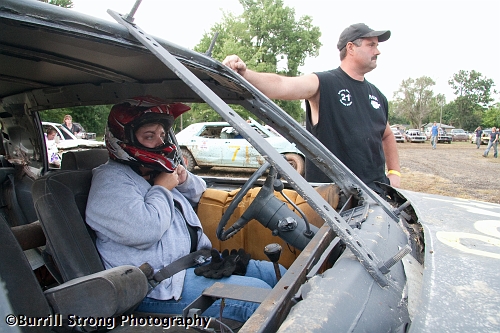
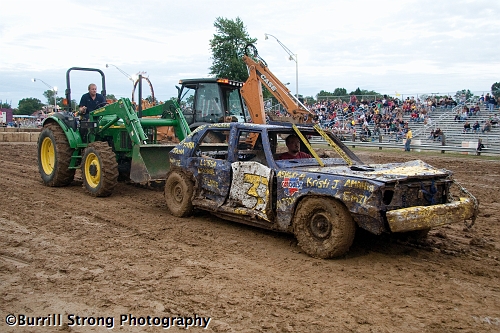
All the cars enter the arena under their own power, but most leave under the power of John Deere, Case or Caterpillar.
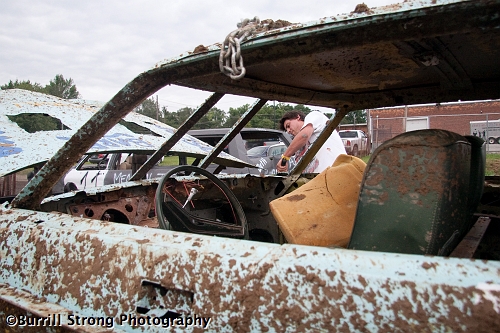
After advancing to the final, Shaun Vasas had to deal with the consequences of the day’s heavy rains: mud packed in his wheel wells. The solution? A sledgehammer.
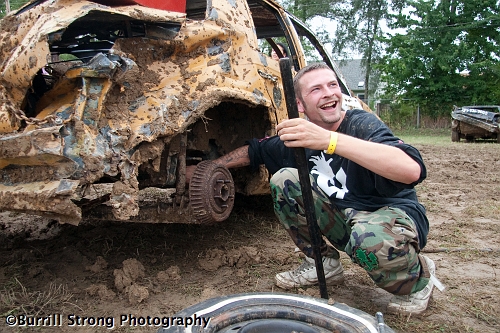
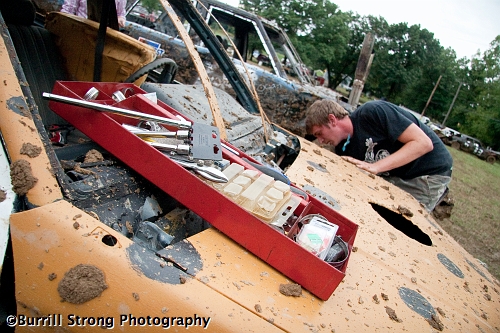
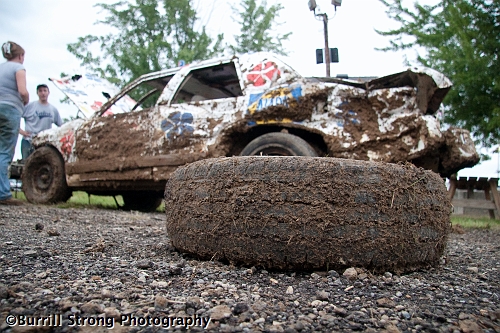
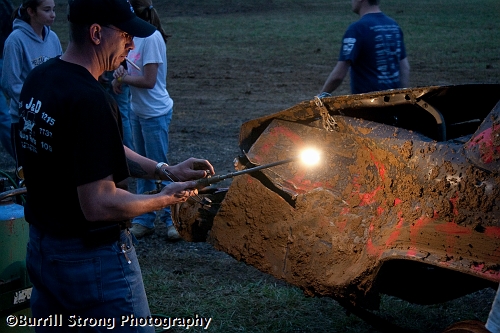
A cigarette and a torch: best combination ever.
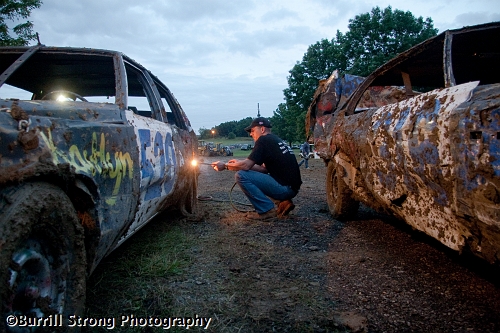
Jeff Wilson needed a little more room in his wheel wells, so he cut a little more room.
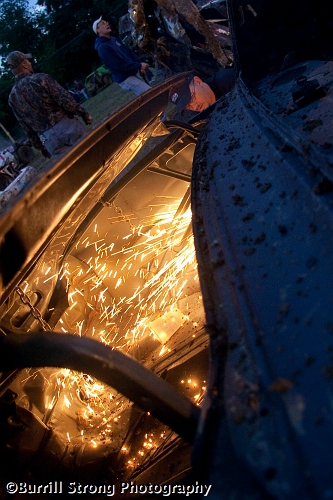
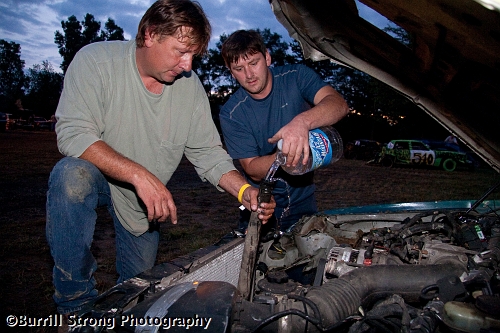
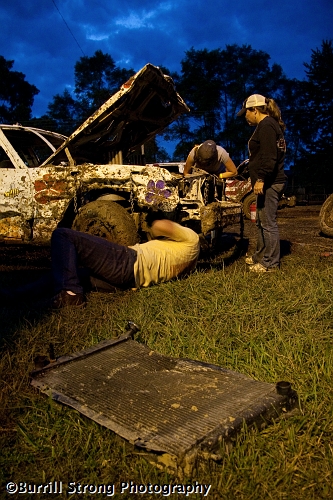
One of the most common tasks in a derby pit is replacing a punctured radiator.
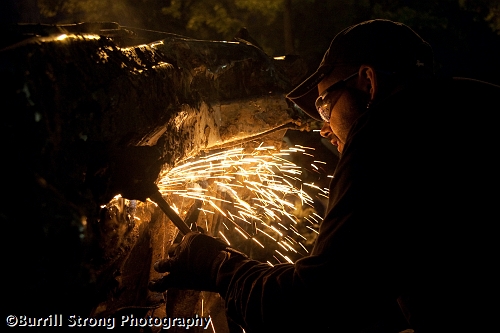
When the collisions begin, a car’s trunk can bend up or down. This particular trunk bent up, leaving the driver unable to see out the back window; to remedy that problem for the final, he cut a hole in the trunk.
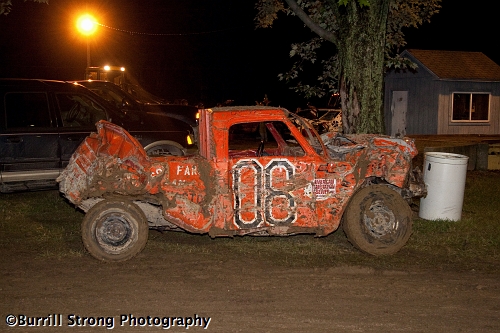
Remember Chris Hurst’s six-derby truck? This is how it looked after its seventh derby. You’re right: it doesn’t look much different. If you’re wondering how it performed…
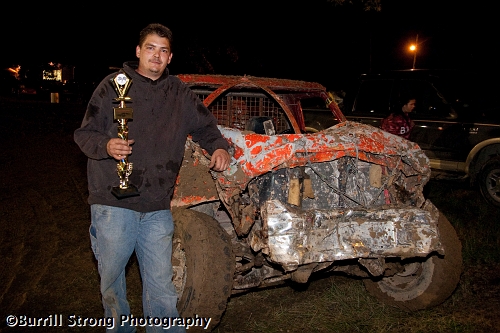
…It took second place. Chris said he could have taken first, but the powertrain gave out.
